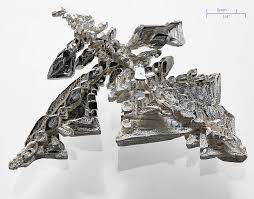Silver
Silver is a chemical element with the symbol Ag. Silver has an atomic number 47. It is a soft, white, lustrous transition metal. The metal silver has the highest and the best electrical conductivity, thermal conductivity, and reflectivity of any metal.
It is used for jewellery and silver tableware, where appearance is important. Silver is used to make mirrors, as it is the best reflector of visible light known, although it does tarnish with time. It is also used in dental alloys, solder and brazing alloys, electrical contacts and batteries.

